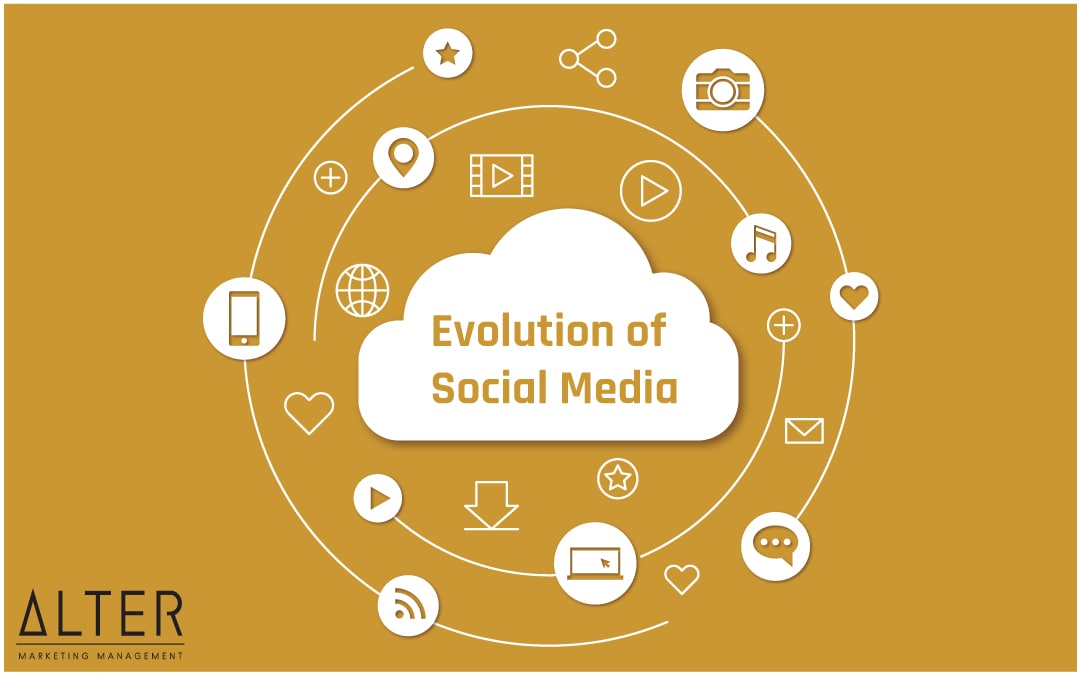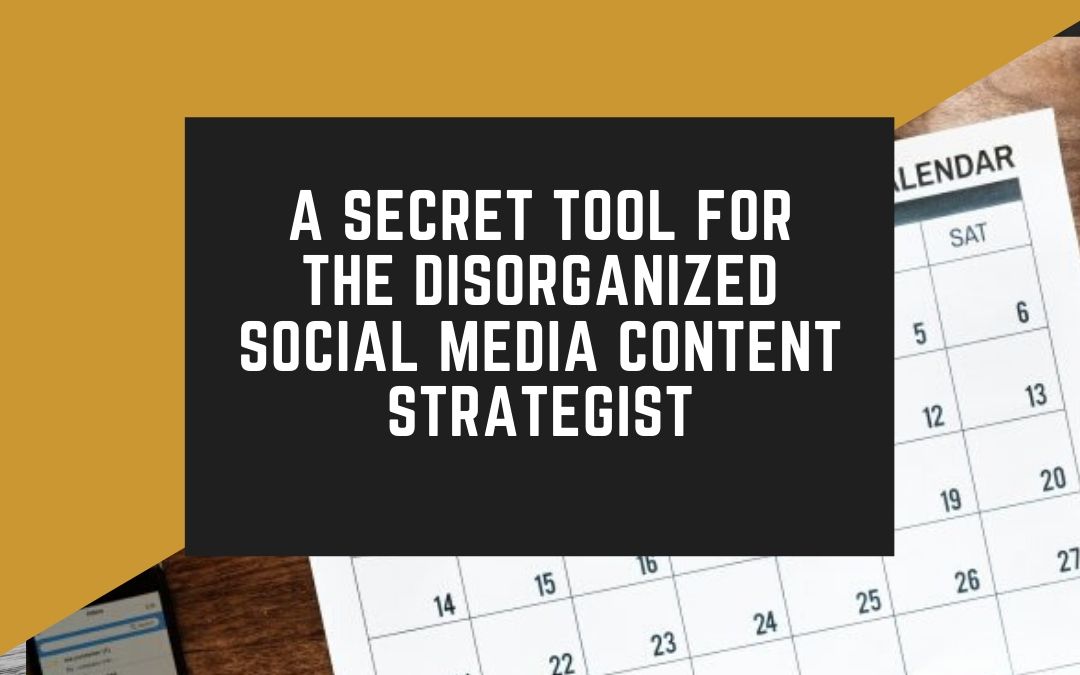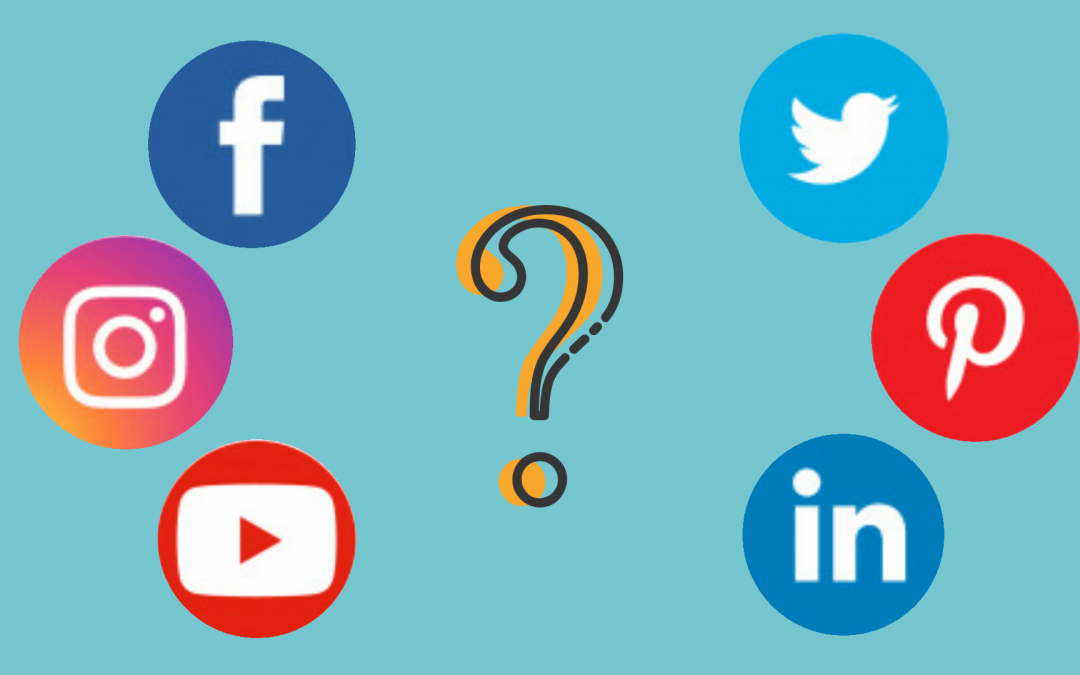
by Alter | Feb 7, 2020 | Blog, Digital marketing
A few years back, the activities which we do didn’t have a like or share button, where the political leaders had to address the nation and not tweet about the issue and filters were part of Photoshop. The presence of social media has led the leaders, celebrities, companies communicate with their audience or people in an easier and a faster medium.
But Why Social media?
In this modern world, people love to be social and social interactions are important to maintain a healthy life and mind. But people just don’t post photos, share and make friends on social media. These connections can often be interactions on the international scale, the users can join groups who share common interests and passions.
When did it all start?
The usage of personal computers became normal in the 90s and there was a growth in blogging which led to the age of social media. The first recognizable social media site was Six Degrees created in 1997 which allowed users to create a profile and make friends with others. But the website eventually failed because there was a lack of connectivity of internet users around the world.
Timeline of Social Media
1997 – Six Degrees – Considered first social network.
2002 – Friendster – Strangers were connected through common friends.
2003 – MySpace – Create Personal profiles with blogs, groups , photos, music and videos and was the largest social networking site till 2009.
2003 – LinkedIn – An employment-based social channel mainly used for professional networking, including job postings in companies and job seekers posting their Cvs.
2004- Facebook – Mark Zuckerberg and his roommates at Harvard founded this social networking website which made users shares photos, links to other sites, chat, watch videos and add family and friends connecting people anywhere in the world,
2005 YouTube – YouTube is the largest video streaming website in the world which allows users to upload, rate, share, add playlists, comment and subscribe to other users, The content of the videos are usually Tv show clips, music videos, short and documentary films, video blogging and educational videos.
2006 – Twitter – Twitter is a social networking and microblogging website which users post and interact with others with messages known as “tweets” and a restriction of 280 characters for the tweet.
2007 Going Viral – “Charlie Bit My Finger” became one of the first videos which went viral on Youtube which featured two brothers in which one bit the other. In recent years we have seen music videos being viral first in Youtube. For instance, Psy’s ‘Gangnam Style’ and Luis Fonsi ft Daddy Yankee ‘Despacito’.
2009 The Million Mark – Ashton Kutcher became the first person to reach 1 million followers on Twitter with a head-on competition with CNN anchor Anderson Cooper.
2010 Instagram – Instagram is a social media application which users to share photos and videos of moments from their lives, add captions, edit filters to the photos , engage with other users and explore with other photos and users.
2011 Snapchat – Snapchat is a multimedia application which enables users to message and send photos to their friends and was initially focused on person to person photo sharing which later became sharing stories which is available for 24 hours.
2013 Selfie – With the increase of social networking around the world, there was an increase in self-portrait photographs which we call as “selfie”. Oxford University declared “selfie” as the word of the year in 2013.
2016 Stories: With the rise of stories in Snapchat, Instagram started stories with more effects and layers to engage with the users. Later the year, Instagram introduced live video function which makes users broadcast themselves live.
2017 Tiktok – A social media video application that allowed users to create and share short lip-sync talent videos and build their audience.
What’s the future of Social Media?
The rise of features in the social media applications over a decade has seen many opportunities to share same interests which have created employments in social media channels like YouTube, Instagram. Rise of Influencer marketing is at its peak where brands collaborate with these influencers who are brand and engage with their audiences and influence purchase decisions for the target audiences. In the near future, an upcoming brand can market aggressively only on social media with the help of these influencers who develop engaging content with their target audiences
Get in touch with the Social Media team of Alter Marketing Management for the expert solution on managing the social media page for your company.

by Disha Prabhu | Jan 17, 2020 | Blog, Digital marketing
If you’re reading this, you are already pulling your hair out handling social media accounts of multiple clients, reaching your deadlines, creating awesome content and STILL facing heat from clients for missing important dates and your management for not doing your job well!
So what on earth is going on?
You, my friend, are suffering from a severe case of ‘Disorganization’! Over 10 innocent strategists lose their sanity to this condition every month. (Random stat alert)
My team and I were diagnosed a couple of months ago.
We came to this realization when for a few months, the last week of every month felt like we were soldiers at a war front without weapons, Ryan Reynolds without his sense of humor and Thor without a hammer.
We were frustrated, angry and tired. Oh, so tired.
This went on until recently we were introduced to a magical tool called a Content Calendar!
A secret tool for the disorganized social media content strategist
What is a Social Media Content Calendar?
In the most basic sense of the term, a content calendar is a document, usually a Google Spreadsheet, which schedules your monthly social media content down to its last detail. It helps you see your content for the week, day and if required, the time of day as well. It is meant to plan out all content across the different platforms which include your blog posts, videos, infographics, photos etc.
Why do you need this content calendar?
We know you have been doing this for a while now and your brain is completely capable of keeping track of things. But how fool proof is this plan?
Let me share a real-life situation with you-
We were handling social media for a patisserie which was famous for its macarons in Mangalore.
Everything was going okay until one day, it was National Macaron Day. We had no clue.
Our client messaged us the day of, and asked us what the plan was for the day. We had no clue.
This is EXACTLY WHY you need a social media content calendar. If you’re still not convinced, the following are a few reasons why, we realized content calendars were our life savers!
1 ORGANIZATION/LESS GOOF-UPS
Content Calendars are not just planning tools or documents; they are legit calendars which gives you the ability to look at your content across platforms all at once! You won’t be worried about any gaps in your campaign. The bonus is that even if you’re down with a fever, a teammate can easily take over without you having to call from your hospital bed explaining what has to be done that day.
2 IMPORTANT DATES WILL BE HIGHLIGHTED
Now you may think that ‘International Happiness Day’ is not important for your client. But trust us, friend, it is! Just to avoid last minute hassles, we include National Holidays, UN Day of Observances, Industry Specific Days and finally, fun/trivial days in the content calendar. We share these ‘days’ in advance with our clients and get a confirmation on what days they would like to celebrate on their pages.
3 THE GIFT OF TIME
Since content calendars are made a month in advance you don’t have to waste time thinking of ideas for content every day or week (depending on how you’re doing it right now). Once we have the important dates, our team sits on a client-wise brainstorming session where we plan fun engagement content, campaign ideas etc. and fill out the rest of the calendar. Once you have the calendar set, all you need to do is start writing the content. We get the entire content for the next month don’t the previous month (apart from the trending formats).
This saves us a great deal of time during the week as everything is pre-scheduled allowing us to be more creative, efficient and productive.
4 BETTER UNDERSTANDING OF YOUR TG & WHAT WORKS
Now that you have more time during the month your content calendar and its execution allows you to see what content has worked and what hasn’t, has your target audience engaged the way you hoped they would, is there anything you could have done differently or better. You will start noticing a pattern- it may be specific days when your content has performed better or a certain communication style that has worked better. When you do this and start creating a content calendar for the following month, you know EXACTLY what to duplicate from the previous month and what to run far away from.
5 EFFICIENT & EFFECTIVE STRATEGIES
Even though you keep saying ‘I work best under stress’, a content calendar will save you the last minute writers’ block and dissatisfaction! When it comes to campaigns and last minute trending format content, content calendars give you enough time to do your research, brainstorm with the team, create and execute. This will turn the ‘I need a beer. It’s been a hell of a day’ to ‘I’m done with work, wanna hang out and have a beer?’ Oh, the joy!
6 STAY SANE AND LOVE YOUR JOB
When you have a content calendar in place, you won’t find yourself pulling your hair out and having anxiety attacks when your deadlines come close or your client says ‘let’s post something on this topic tomorrow’. You won’t be digging for content; instead, you’ll find yourself making informed decisions about your next content.
Now that you know why having a content calendar is a smart call, start executing! If you don’t like Excel sheets and Google Docs, just go online and looking for free tools to create content calendars easily.
Let us know how it works out for you in the comment section!
Good luck & remember to ‘Keep Calm and Content On’!

by Alaina Pereira | Dec 10, 2019 | Blog, Digital marketing
Social media is the most effective method to promote a small business. Each social media platform is used for a different reason and has its own set of users. It is important to consider which social media platforms suit your business rather than joining all the available social media platforms.
Here are a few important tips that you can follow before you choose a social media platform for business marketing
Finding the right target audience:
In order to select the best social media platform for your business, you must first know who your audience is. This can be done by finding out the age, gender, occupation, likes, dislikes and problems that your audience might be facing.
You can further look at the social media platforms and see which platform can be used to solve the problems of your audience. While doing this, you must also keep in mind the purpose of your business and the content you want to share with your audience.
Setting business goals:
As a business owner, you know what goals suit your business. It can either be a single goal or multiple goals. On social media, your goals can be to drive traffic to your website, increase followers, attain brand awareness, increase sales, to build relationships with your potential buyers or can even be used for customer support.
As a business, you can use different platforms to solve various problems that your audience may face. Make sure that the platform you choose goes with your business style and that you enjoy the platform. You will be spending hours testing and trying the platform work.
Selecting the right platform:
Once you have figured out who your audience is and what your business goals are, the next step is to check the demographics of each social media platform. See where your audience lies and where your business will fit in.
Each platform should be utilized differently and the same content should not be posted on all the platforms. Your audience and potential customers come to you to find valuable and relevant content. Therefore, unique content should be posted on each platform.
The brief below can help you choose the best social media platform between the platforms available
FACEBOOK
Facebook is a large platform that has a diverse audience of about 2.41 billion monthly active users. People of all ages can be found on Facebook, although the largest user base ranges from the age category of 25 – 54. The platform is used to build relationships and to keep in contact with friends. Since this platform is highly populated, it can be tedious to reach your audience. If your business goal is to build brand awareness then this may not be the platform for you. However, if your goal is to build relationships and keep in contact with your clients, this is the most suitable platform.
INSTAGRAM
Instagram is the most fast-paced platform, with more than 1 billion monthly users. As the main focus of the app is the visual content, the age demographic mainly ranges from 18 – 29. People use Instagram to build relationships and conversations. This platform works best for visual-based businesses like art, food, retail and beauty. It can be used to showcase your products and tell your brand’s story through high-quality images and videos.
TWITTER
Twitter has 330 million monthly users worldwide, of the younger age group from 18-29 years. As a brand, Twitter can be used to reach and engage with your audience and also to build brand awareness. Hashtags can be used to participate in trending topics as well as to reach new audiences that might be interested in the content being put out. It is mainly used to take part in popular conversations and to follow real-time news.
LINKEDIN
LinkedIn is the best social media platform for professionals. It is used by the audience in the age group from 25-40. It can be used to showcase your blogs and articles and to update news about your business. It is also a great platform to network with like-minded clients and professionals, great for B2B business and to recruit new employees.
YOUTUBE
YouTube has more than 1 billion users and has become one of the biggest search engine platforms. It is an amazing platform to engage with your target audience by creating and publishing video content. Service based industries that make compelling video content will benefit largely on YouTube. Content posted on YouTube can also be found on Google.
PINTEREST
Pinterest has reached an audience of about 300 million active users. Pinterest is used for “scrapbooking” and to save content by pinning pictures to a board. This platform works well for brands that have high-quality images to share, as the pictures can be linked back to the site and drive more traffic. The commonly saved pins are of recipes, photographs, DIY’s, quotes and infographics. Brands can use the platform to create boards to showcase their products and style. Google displays the Pinterest images in its image search results.
As there are multiple social media platforms available, it is crucial to find the right fit for your business. Although it is a tedious process and requires trial and error, a great Social Media Company can assist you with this. Upon finding a suitable platform, it is easy to communicate with your audience and generate traffic towards your business. For more information have a look at Alt-er Social.



